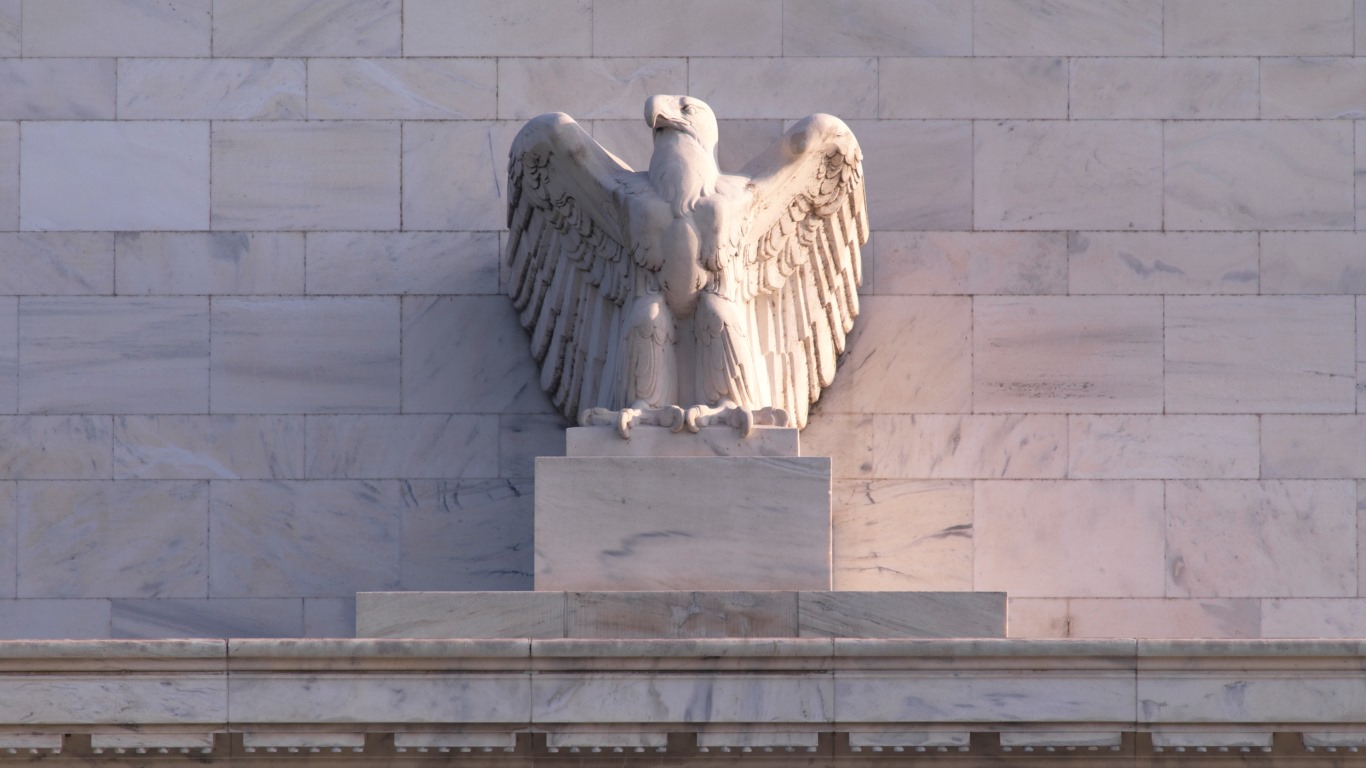Economy
Forget Hyperinflation! Can the Fed Handle the Current Deflation in the Recession?

Published:

When the Federal Reserve lowers interest rates to zero at the same time the Treasury has printed trillions of dollars for economic stimulus, many classical economists would throw up a red flag. Even in a recession, many economists would worry that inflation, or even hyperinflation, has to be coming soon. What if all these efforts are simply the modern tools to fight deflation while the United States is in a deep and sudden recession?
The U.S. Department of Labor has reported that consumer prices were negative in April. The Consumer Price Index (CPI) fell by 0.8% on the “all items” headline report, and that is after a 0.4% drop in March. While the −0.8% reading met the Dow Jones consensus estimate, a negative headline CPI is deflation, and Federal Reserve and other officials fear deflation with its tailspin of negative price trends much more than they fear inflation.
It is important to consider that this report is made on a seasonally adjusted basis and is versus the prior month. The headline CPI report was also up 0.3% from a year ago. That is still positive, but it is way under the Federal Reserve’s 2.0% baseline inflation target.
A more pointed “core” CPI reading, excluding food and energy, fell by 0.4% in April’s seasonally adjusted reading versus March. Still, the core CPI reading was up 1.4% over the past year.
The main culprit in the current deflation has been energy. A 20.6% drop in the gasoline index was the largest single contributor to the monthly decrease in the all-items index. The energy index declined mostly due to the decrease in the gasoline index, though some energy component indexes rose. Additional weakness came from prices in apparel, motor vehicle insurance, airline fares and lodging.
Not all prices are dropping. The indexes rose for food prices, and “food at home” saw its largest monthly price gains going all the way back to February of 1974.
The Bureau of Labor Statistics outlined just how bad April’s price drop was. It said:
The index for all items less food and energy fell 0.4 percent in April, the largest monthly decline in the history of the series, which dates to 1957. Along with the indexes mentioned above, the indexes for used cars and trucks and recreation also declined. The indexes for rent, owners’ equivalent rent, medical care, and household furnishings and operations all increased in April.
Another issue to keep in mind is that this actual CPI report may have been better or worse, depending on what might not be in the report. Oil prices already have recovered from their plunge-depth lows in March and April. And the Bureau of Labor Statistics was unable to collect some prices physically. The report had a special note regarding how the COVID-19 pandemic affected its data collection:
Data collection by personal visit for the Consumer Price Index (CPI) program has been suspended since March 16, 2020. When possible, data normally collected by personal visit were collected either online or by phone. Additionally, data collection in April was affected by the temporary closing or limited operations of certain types of establishments. These factors resulted in an increase in the number of prices considered temporarily unavailable and imputed. While the CPI program attempted to collect as much data as possible, many indexes are based on smaller amounts of collected prices than usual, and a small number of indexes that are normally published were not published this month.
While it would be easy to point to the trillions of dollars and endless bond buying that has been seen, maybe the Federal Reserve is just looking at this the wrong way. Maybe the Fed should have just started buying oil endlessly by turning quantitative easing into quantitative expansion. If there was just somewhere to store the oil.
Stocks ignored the news, with the Dow up 140 points (0.6%) and the S&P 500 up seven points (0.25%). The yield on the 10-year Treasury was down less than one basis point at 0.723% on last look.
Retirement can be daunting, but it doesn’t need to be.
Imagine having an expert in your corner to help you with your financial goals. Someone to help you determine if you’re ahead, behind, or right on track. With SmartAsset, that’s not just a dream—it’s reality. This free tool connects you with pre-screened financial advisors who work in your best interests. It’s quick, it’s easy, so take the leap today and start planning smarter!
Don’t waste another minute; get started right here and help your retirement dreams become a retirement reality.
Thank you for reading! Have some feedback for us?
Contact the 24/7 Wall St. editorial team.